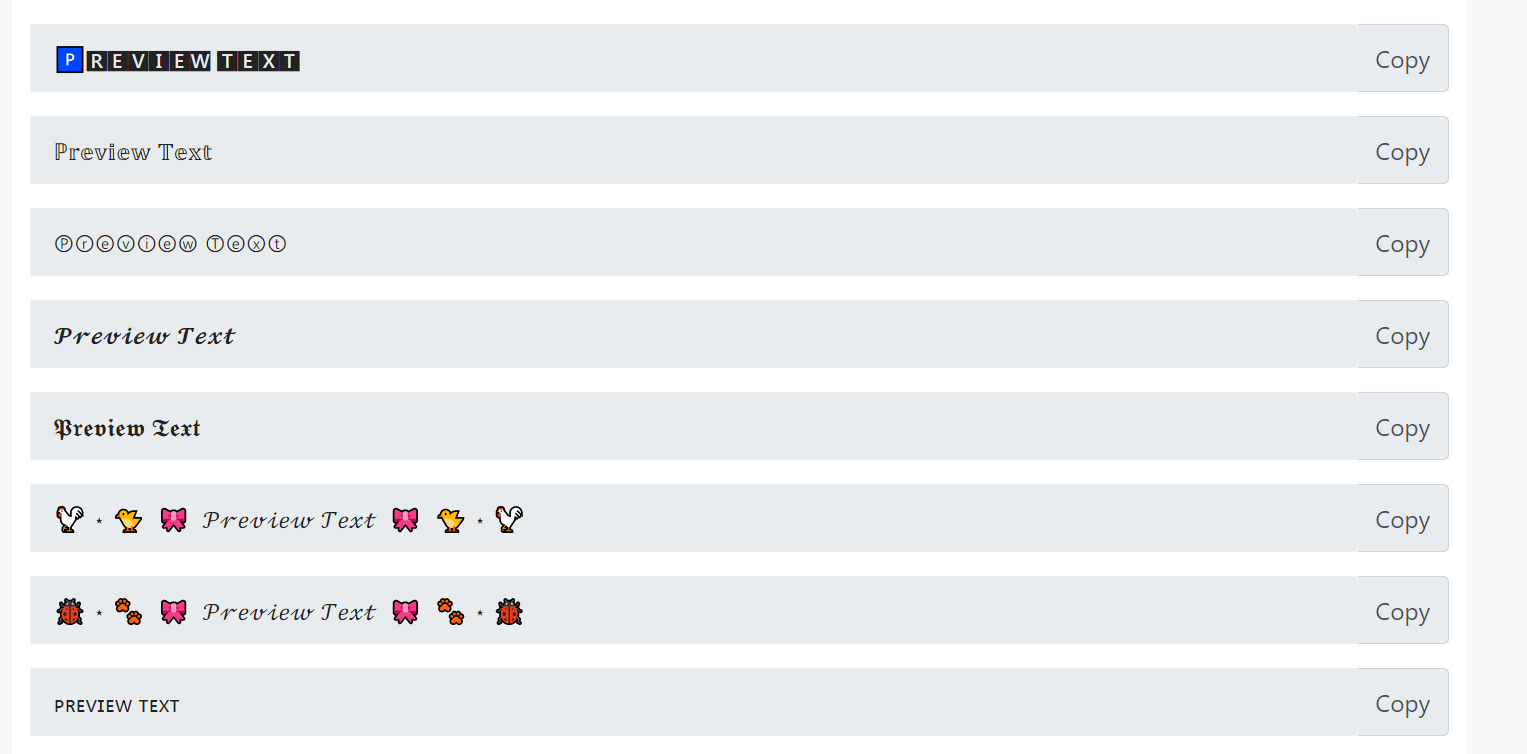
Old English Font Copy and Paste: Adding a Classic Twist to Your Online Presence
Are you looking to add some medieval flair to your digital projects? old English font may be just what you need! This article will examine the background and traits of the old English typeface, as well as its uses in typography and graphic design, and offer advice on how to make the most of it. We’ll also go over where to find old English typefaces, how to copy and paste them, and offer substitutes for anyone else seeking a font that looks close. This post will offer helpful insights on old English fonts and how to use old English font copy and paste into your work, whether you’re a designer, writer, or simply interested in typography.
What is an Old English Font in Detail?
Old English font, also known as Blackletter, is a typeface characterized by its ornate and angular script with thick, heavy lines. It has medieval origins and was widely employed in printed books and handwritten manuscripts from the 12th through the 17th century. The Old English font is often associated with the Gothic architecture and art style of the time. It is still used today in various contexts, such as branding, logos, and design elements, to evoke a sense of tradition, history, and elegance. The font is well known for its distinctive appearance and has gained popularity among graphic designers and fans of typography.
History of Old English Font
Blackletter, another name for the old English font, has a long history that dates back to Europe’s medieval era. The Carolingian minuscule script, which was employed to write manuscripts in the eighth and ninth centuries, served as the inspiration for the font. During the 11th century, the Gothic script emerged, and by the 12th century, the Blackletter font had evolved into its distinctive form.
The Old English font was widely used for handwritten manuscripts and printed books during the Middle Ages and the Renaissance period. It was particularly popular in Germany and other parts of Europe, where it became the dominant script for books and official documents. In England, the font was used for official documents such as charters and legal deeds, and scribes and calligraphers commonly used it for writing manuscripts.
The popularity of Old English fonts declined in the 17th century as more modern typefaces, such as Roman and Italic fonts, became more prevalent. Nonetheless, the font was still used in a few places, especially in Germany, where printing newspapers with it remained common until the early 20th century.
Today, the Old English font is still used in various contexts, particularly in branding, logos, and design elements. It is also used in academic publications and by some calligraphers and graphic designers who appreciate its unique style and historical significance. The Old English typeface is still valued by typography fans all around the world, despite its waning appeal. It is a significant element of typography history.
How to Use Old English Font Copy and Paste in Your Projects?
Old English font, also known as Blackletter, is a distinctive and ornate typeface that can add a sense of tradition and history to your digital projects. Here are some tips for using Old English font effectively:
Consider the context: Old English fonts are often associated with medieval and Gothic styles, so they may not be appropriate for all types of projects. Consider whether the font fits with the tone and style of your project.
Use it sparingly: Old English fonts can be overwhelming if overused. Consider using it for headings, titles, or other design elements rather than for large blocks of text.
Select the right size: Old English fonts can be difficult to read if they are too small or too large. Experiment with different sizes to find the right balance.
Pair it with other fonts: Old English fonts can be paired with other fonts to create a unique and interesting design. Consider pairing it with a simple sans-serif font to create contrast.
Experiment with colors and textures: Old English fonts can be enhanced with colors and textures to create a more dynamic design. Experiment with different color schemes and textures to find the right combination for your project.
You can effectively use Old English fonts in your projects and add a sense of tradition and history to your designs.
Get Creative with Old English Font Copy and Paste
If you want to use an old English font in your digital projects, you can easily copy and paste it from various websites offering free font downloads. Here are the steps to copy and paste old English font:
Find a website that offers old English font generator. Examples include Dafont, FontSpace, and fontchangerguru.com.
Choose the Old English font you want to use by perusing the options.
With the “Download” button, you may save the typeface to your computer.
Unzip the font file after downloading it, then install it on your PC. There can be different installation procedures for fonts depending on your operating system.
Open the program or document where you want to use the Old English font.
Select the text you want to change to the Old English font.
Go to the font menu and select the installed Old English font from the list of available fonts.
Alternatively, you can copy and paste Old English fonts from a website that offers a text generator like fontchangerguru.com. Simply type in the text you want to use and select the Old English font from the available options. Then, copy and paste the generated text into your document or program.
You can easily copy and paste Old English fonts and incorporate them into your digital projects.
Old English Font Alternatives
There are various fonts that are comparable to old English fonts that you can use in your digital projects if you’re looking for an alternative. Here are some popular alternatives to Old English font:
Fraktur: Fraktur is a blackletter font that is similar to Old English font. It has ornate and angular letters with thick, heavy lines.
Cloister Black: Cloister Black is a blackletter font that is similar to Old English font, but with slightly more modern and streamlined letterforms.
Textura: Textura is a blackletter font similar to Old English font but with more intricate and elaborate letterforms.
Lombardic: Lombardic is a blackletter font that is similar to Old English font but with more curved and flowing letterforms.
Gothic: Gothic is a broad category of fonts that includes blackletter fonts like Old English fonts. Gothic typefaces come in a wide variety of designs, each with distinctive features.
You can achieve a similar look and feel to Old English fonts in your digital projects.
Old English font, also known as Blackletter, has a rich history and remains popular for typography enthusiasts and designers today. Whether you want to add a sense of tradition and history to your design projects or simply appreciate the unique style and ornate letterforms of Old English fonts, there are many ways to incorporate them into your work. By following the tips for using Old English fonts effectively and exploring alternative fonts that offer a similar aesthetic, you can create beautiful and impactful designs that showcase the beauty and versatility of typography.
FAQs:
Q: What is an old English font?
A: Old English font is a distinctive and ornate typeface that is often associated with medieval and Gothic styles. It is also known as Blackletter and features elaborate, angular letters with thick, heavy lines.
Q: How do I use old English fonts in my projects?
A: To use Old English fonts in your projects, you can download and install the font on your computer, then select it from the font menu in your design program or document. Alternatively, you can copy and paste Old English fonts from a website that offers a text generator.
Q: Can old English font be used for large blocks of text?
A: Old English fonts can be difficult to read if used for large blocks of text. It is generally recommended to use it for headings, titles, or other design elements rather than for extensive text.
Q: Are there alternative fonts to old English fonts?
A: Yes, there are several similar fonts that you can use in place of an Old English font. Some popular alternatives include Fraktur, Cloister Black, Textura, Lombardic, and Gothic.
Q: What is the history of Old English fonts?
A: Old English font has a rich history dating back to the 12th century when it was commonly used for manuscripts and documents. It remained a popular font choice throughout the medieval period and was later revived during the Arts and Crafts movement in the 19th century.







